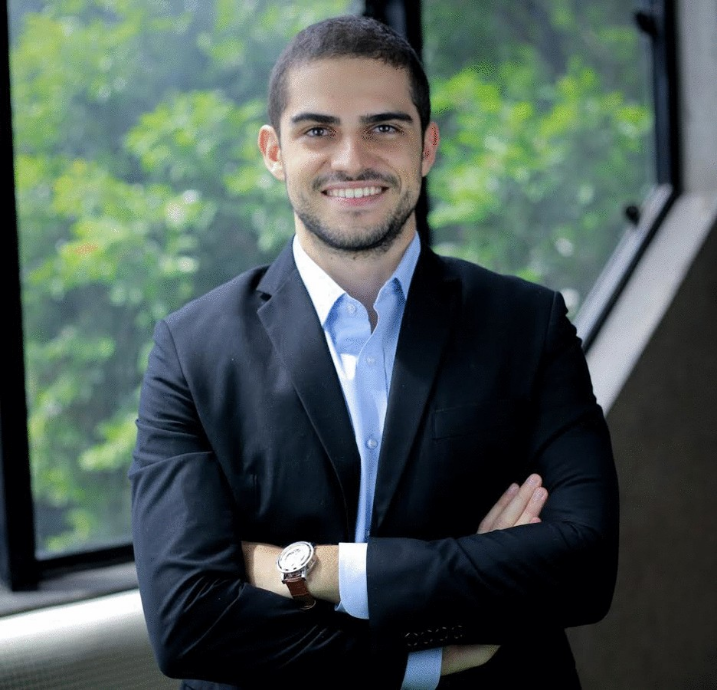What do venture capitalists do? In the innovation ecosystem, venture capitalist stand apart. A source of money and ideas, entrepreneurs seek their advice and capital while industry leaders glean their insight on disruptions in the market. So clearly, venture capitalists are coveted. But what do they do? I cover this topic with Managing Director of venture capital firm SaaSholic, Gustavo Souza.
In the innovation ecosystem, venture capitalist stand apart. A source of money and ideas, entrepreneurs seek their advice and capital while industry leaders glean their insight on disruptions in the market. So clearly, venture capitalists are coveted. But what do they do? I cover this topic with Managing Director of venture capital firm SaaSholic, Gustavo Souza.
I/ A Very Brief Introduction of Gustavo
Gustavo started out working in a technology startup and moved up the ranks. Then, he decided to found his own firm venture capital, SaaSholic with another partner still working in the startup he left, creating a strong “hands-on” culture.
II/ SaaSholic’s investment thesis
The venture capital firm’s thesis can be divided up in several components.
The firm is after startups…
- Generating recurring revenues
- Based in Latin American countries like Brazil, Argentina, Colombia
- Still in early stages and seeking pre-seed or seed investments.
SaaSholic is sector agnostic.
I wondered whether such an investment thesis would rule out marketplace based business model startups. “Not necessarily,” answered Gustavo. He quoted the example of a startup called microacquire which is a platform bringing together acquirers and buyers paying a monthly fee. As the company is generating recurring revenue, the startup is relevant to SaaSholic’s investment thesis.
III/ Getting to what venture capitalists do
I started out by saying that a friend of mine, Florian Graillot, founder of InsuranceTech VC, Astorya, mentioned that venture capitalist basically do three different things.
- raise funds from institutional investors
- look for startups
- return capital to institutional investors
I asked whether this broad description made sense. Gustavo said it did. So we decided to delve into deeper details.
IV/ First, we looked at raising funds
Fundraising and investor relations with limited partners will take up anywhere between 10 to 20% of a venture capitalist’s time. Fundraising involves :
- qualifying the fund one is trying to build,
- listing relevant limited partners,
- reaching out to potential limited partners,
- getting commitments,
- raising the fund,
- securing 70% of the fund,
- ultimately, raising the remaining 30% along the way.
Once the fund is raised, the conversation moves on to managing investor relationships. Gustavo maintains regular touch points with investors by creating a WhatsApp group or a setting up recurring meetings.
V/ Deal sourcing and origination
Deal sourcing and origination is second on the “to do list.” Taking up 30% of a VC’s time, it consists in :
- spotting channels to generate a pipeline
- networking through limited partners that may recommend startups,
- networking with VC-backed startups that may recommend other startups,
- partnering with other venture capitalists whether they may be downstream or upstream: upstream venture capitalist would be those that invested at the very beginning of a startup ; downstream venture capitalist would be those that invest in later stages.
Both online and off-line marketing also paves the way to sourcing deals.
VI/ Investment analysis
Now once venture capitalists have filled up the pipeline, they move on to the next major activity: investment analysis. Taking up about 20% of a VC time, investment analysis requires :
- studying the market
- meeting the founders
- engaging in internal and external discussions to vet the startup’s business plan
- seeking external expertise when necessary.
Ultimately, once a VC is keen to invest, earning a seat on the startup’s capitalization table comes next. This is particularly true now as the “world is awash with capital,” as HBR Professor Clayton Christensen often said. Founders may sometimes choose between multiple venture capitalists. So understanding what kind of investors founders need matters immensely.
VII/ Managing the fund and providing portfolio support
Now this brings us to the fourth generic activity : managing the fun and providing portfolio support. This will take up 40% of a venture capitalist’s time and it involves helping entrepreneurs with their marketing, sales, hiring and overall strategy execution.
VIII/ Backoffice management
But managing the fund also means managing the venture capital organization itself and that requires hiring people to join the venture capital organization and paying taxes and conducting a number of administrative tasks. This will take up 10% of a VCs time.
So what do venture capitalists do? They conduct multiple activities:
- Fundraising and investor relations,
- deal sourcing origination,
- investment analysis,
- portfolio support,
- VC back office management
In a follow-up conversation, Gustavo and I discussed which of these activities are the hardest and most important. More soon.
